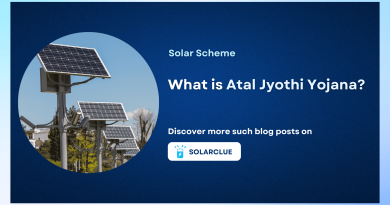How To Disconnect Solar Panels?
Disconnecting solar panels is a process that requires careful planning and attention to safety. Whether you’re performing maintenance, upgrading your system, or conducting roof repairs, following the correct procedures is essential to avoid accidents or damage. This blog provides detailed steps for safely disconnecting solar panels, including safety precautions, the necessary permits, and tips for handling and storing the panels.
Safety First: Essential Precautions Before Disconnecting
Before you begin disconnecting your solar panels, it’s crucial to prioritize safety. Solar panels generate electricity when exposed to sunlight, so improper handling can lead to serious injuries or electrical hazards.
| Safety Precaution | Explanation |
|---|---|
| Wear Protective Gear | Use insulated gloves, safety goggles, and non-conductive footwear. |
| Work During Low Sunlight | Disconnect panels early in the morning or late in the evening to minimize electrical output. |
| Use Insulated Tools | Ensure all tools used are insulated to prevent electrical shocks. |
Necessary Permits and Approvals
In some cases, disconnecting solar panels may require permits or approvals, especially if you’re making significant changes to your system or if local regulations mandate it.
| Permit/Approval | When Required |
|---|---|
| Electrical Permit | Required when altering wiring or electrical components. |
| Building Permit | Necessary for structural changes, such as roof repairs. |
| Utility Approval | Must notify the utility company if disconnecting from the grid. |
Step-by-Step Guide to Disconnecting Solar Panels
Follow these steps to safely disconnect your solar panels:
1. Turn Off the System:
Start by turning off the solar inverter and the main AC disconnect to stop the flow of electricity.
2. Isolate the Solar Panels:
Use the DC disconnect switch to isolate the solar panels from the inverter.
3. Disconnect Wiring:
Carefully disconnect the wiring from the solar panels, starting with the positive connections and then the negative. Use insulated tools and be mindful of any residual current.
4. Remove the Panels:
Unscrew and remove the solar panels from their mounts. Ensure that the panels are handled gently to avoid damaging the cells.
Cap Off Exposed Wires:
To prevent accidental electrical conduction, cap off any exposed wires using wire nuts or electrical tape.
| Step | Explanation |
|---|---|
| 1. Turn Off the System | Deactivate the inverter and main AC disconnect. |
| 2. Isolate the Solar Panels | Use the DC disconnect switch to isolate the panels. |
| 3. Disconnect Wiring | Disconnect the positive and negative wiring from the panels. |
| 4. Remove the Panels | Unscrew and carefully remove the panels from their mounts. |
| 5. Cap Off Exposed Wires | Secure exposed wires to prevent electrical hazards. |
Handling and Storing Disconnected Panels
After disconnecting the panels, handle them carefully to avoid damage. Store them in a dry, shaded area to protect them from the elements and prevent accidental re-connection.
| Handling Tip | Explanation |
|---|---|
| Avoid Dropping Panels | Handle panels with care to avoid cracking the glass or damaging the cells. |
| Store Vertically | Store panels vertically on a soft surface to prevent warping or bending. |
| Cover with a Tarp | Use a non-abrasive tarp to cover the panels and protect them from dust and debris. |
Reconnecting Solar Panels After Disconnection
When it’s time to reconnect your solar panels, reverse the disconnection process. Ensure that all connections are secure, and test the system to confirm proper operation.
When to Disconnect Solar Panels for Maintenance or Repairs
There are several scenarios where disconnecting solar panels may be necessary:
Roof Repairs: If you’re repairing or replacing your roof, the panels must be removed to prevent damage.
System Upgrades: Upgrading your solar inverter or adding more panels may require temporarily disconnecting your system.
Maintenance: Regular maintenance, such as cleaning or inspecting panels, may involve partial disconnection to ensure safety.
Emergency Disconnection Procedures
In an emergency, such as a fire or electrical fault, you may need to disconnect your solar panels quickly. Know the location of your system’s emergency disconnect switch and ensure all household members are familiar with its use.
Legal and Insurance Considerations
Before disconnecting your solar panels, check with your insurance provider to ensure you’re covered for any potential damage. Additionally, be aware of any legal obligations, such as notifying your utility company.
Professional Assistance for Complex Disconnections
For complex disconnections or if you’re unsure about any part of the process, it’s advisable to seek professional assistance. Licensed electricians and solar installers have the expertise to safely disconnect and reconnect your solar panels.
Tips for Preventing Accidental Reconnection
To prevent accidental reconnection, label all disconnected wires and use lockout devices on switches and breakers. This will ensure that the system remains safely disconnected until it’s time to reconnect.
Essential Steps for Safely Disconnecting Solar Panels
| Step | Action |
|---|---|
| Turn Off the System | Deactivate the inverter and main AC disconnect. |
| Isolate the Solar Panels | Use the DC disconnect switch to separate panels from the inverter. |
| Disconnect Wiring | Safely disconnect positive and negative wires from the panels. |
| Remove the Panels | Carefully unscrew and remove panels from mounts. |
| Cap Off Exposed Wires | Secure exposed wires to prevent electrical hazards. |
Conclusion
Safely disconnecting solar panels requires careful planning and adherence to safety protocols. By following the steps outlined in this guide, you can ensure that your solar panel system is disconnected and reconnected without incident. Whether for maintenance, upgrades, or emergencies, understanding the disconnection process will help protect your investment and keep your home safe.
Here at SolarClue®, we offer a smart, practical, and “beautiful” solution. You will be answered for all the questions related to Solar.
We provide all kinds of brands that are the Best Solar panels in India.
If you are the one who is planning for the solar power system. Don’t hesitate to contact our team!
Looking forward to empowering you with solar energy, just like hundreds of our other clients!
FAQs
1. Why is it important to safely disconnect solar panels?
Safely disconnecting solar panels prevents electrical hazards, protects the system, and ensures compliance with regulations.
2. Do I need permits to disconnect my solar panels?
Depending on your location and the scope of the work, you may need permits such as electrical or building permits.
3. What are the main steps to safely disconnect solar panels?
The main steps include turning off the system, isolating the panels, disconnecting the wiring, removing the panels, and capping off exposed wires.
4. When might I need to disconnect my solar panels?
You may need to disconnect your panels for roof repairs, system upgrades, or maintenance.
5. Can I disconnect solar panels myself, or should I hire a professional?
While you can disconnect panels yourself with proper knowledge and precautions, it’s often safer to hire a professional, especially for complex systems.



